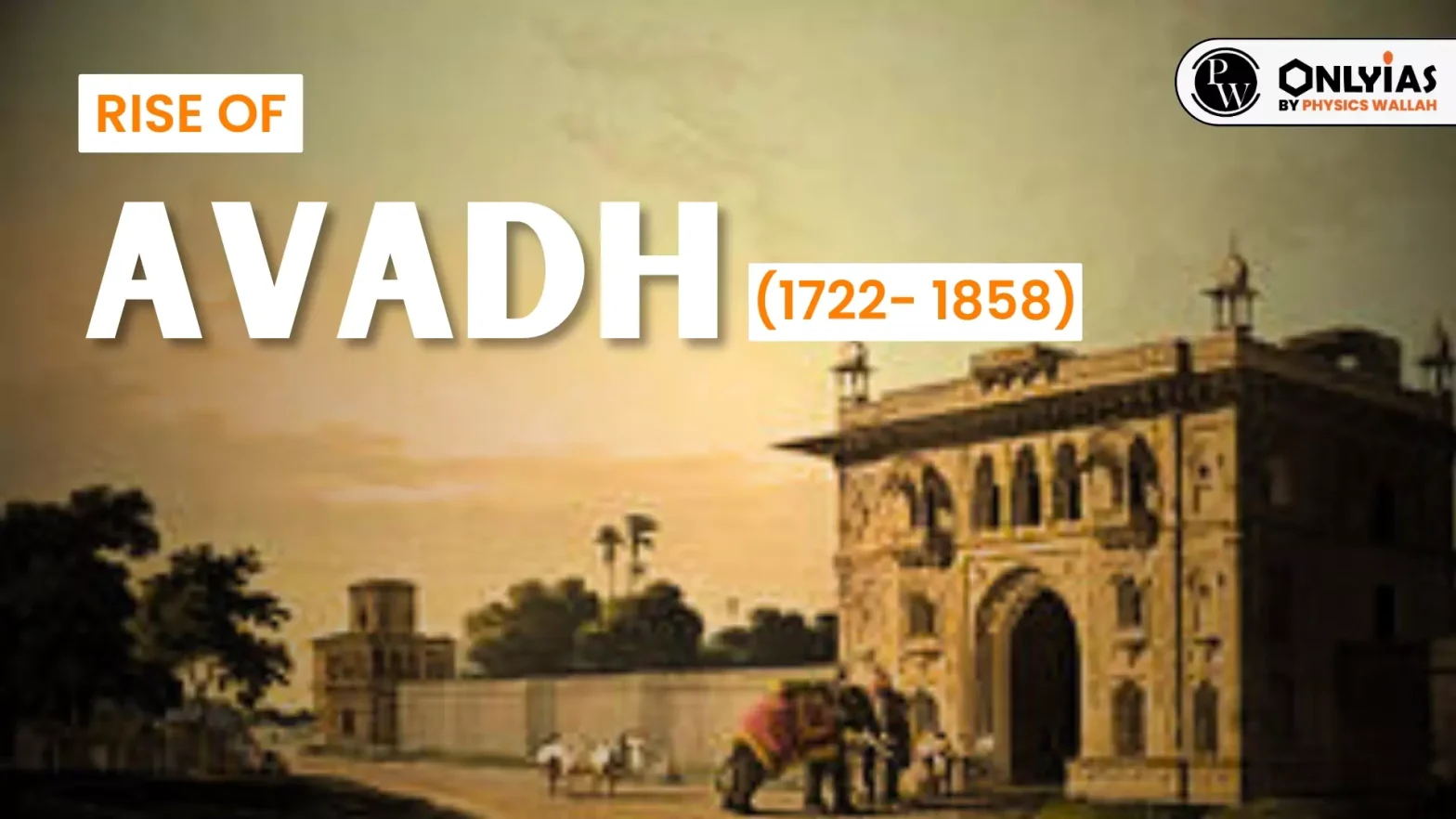
Saadat Khan Burhan-ul-Mulk, who was appointed Governor of Avadh in 1722, is credited with founding the independent kingdom of Avadh. The rise of Avadh marked a significant period of autonomy and prosperity in northern India. Led by capable rulers and supported by administrative reforms, Avadh gained stability and consolidated its power. Through territorial expansion, economic development, and cultural patronage, Avadh emerged as a powerful regional force. Its vibrant court, architectural legacy, and intellectual advancements contributed to its cultural renaissance.
A brief account of the rise of Avadh is given below:
|
#PW-OnlyIAS Edge |
|
Saadat Khan and Zamindar Rebellion
|
|
Military Expeditions |
|
The administration and expansion of the Avadh Kingdom, also known as Awadh or Oudh, were multifaceted processes that spanned several centuries. Here is a detailed account of the administration and expansion of the Avadh Kingdom:
|
Some Administrative Reforms by Saadat Khan |
|
| Revenue Settlement |
|
| Secular Administration |
|
| Jagir Reforms |
|
The Avadh Kingdom in northern India experienced autonomy, territorial expansion, economic prosperity, and cultural renaissance under Saadat Khan. British intervention, beginning with the Treaty of Allahabad, eroded independence, leading to its eventual annexation in 1856. The story highlights the complex dynamics between native Indian kingdoms and colonialism in the 18th and 19th centuries.
This is a demo FAQ to show how questions and answers can be displayed.

<div class="new-fform">
</div>